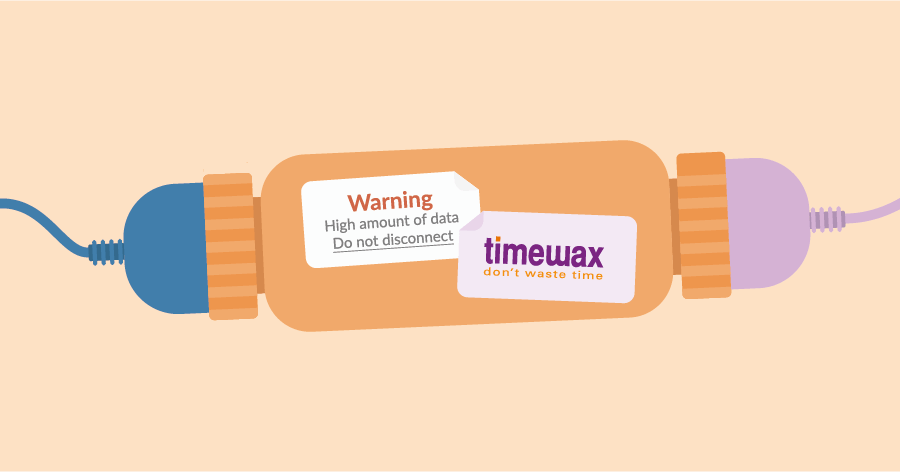Integrate for efficiency.
Everyone gets bogged down by repetitive tasks. That’s when you can’t help thinking: “Surely this can be done another way?” Tasks such as copying data, preparing paper documents and processing receipts. By integrating your planning software to, for example, your HRM or CRM or financial platform, you can easily automate these tasks. in this blog we’ll look at the benefits of doing that.
Chances are you’ve been managing everything quite well thus far by introducing a single integrated system, such as an ERP system. However, these systems often do not offer the perfect solution when it comes to planning. Furthermore, you also need to integrate your ERP system to your planning system. At the end of the day, the purpose of an ERP system is to have an integrated system for you business operations.
1. It saves time
First of all, integrating software systems saves time. Planning systems often exist in a standalone application, such as Excel for example. Data is then manually migrated from HRM systems and entered into a planning spreadsheet.
When the planner has completed their planning schedule, it then has to be communicated to the relevant workers. Many organizations do this either by phoning, emailing, or using some sort of app. If your company is on any reasonable size, this means that the planner is going to have to spend a good amount of time on these tasks. Simply because not everyone is immediately reachable and messages are often read later. And this process has to be started all over again whenever changes are made to the planning.
When your planning software is integrated with other systems, these manual tasks all fall away. When a new employee is inserted into the HRM system, for example, the integration automatically retrieves the data and places it in your planning system. The new worker will then appear on the planner’s digital planning board. Furthermore, bookings for projects are directly sent to the calendar or mobile app of the relevant employee. The same applies when there are changes.
2. It prevents errors
The second important advantage is the prevention of errors. Every manual task in your project planning leaves room for mistakes. For example, typos can be made or data can be entered in the wrong cell and go unnoticed. All these errors have consequences. For example, employees may be booked for more hours than they are available, or receive incorrect instructions or even travel to the wrong locations.
Besides making mistakes that annoy co-workers, mistakes can also be made that impact negatively on customers. As we all know, a returning customer is more valuable than a once-off client. That’s why it’s essential to ensure that all agreements with customers are met. This means being in the right place at the right time and sending the correct invoice after completing the job.
When your project planning has been integrated, you avoid mistakes. The customer’s details, times, instructions, rates and other important data can all be correctly copied via direct links.
3. Data is always current
The third advantage of integrating systems is that all data in the various software applications are always updated and current. If you do not have an integration between the various software applications, there may be a significant delay before the data becomes available on other systems.
Here’s an example: the project planner receives a new project application form and enters the project in the planning schedule. Once finalized, everything is then passed on to the relevant operational workers. However, the customer then decides to make changes. Say he decides to add additional features. This means that the new changes not only have to be manually entered into the planning schedule by the planner, but he or she must also manually send on these changes to the relevant employees who may not always be available or reachable. This means that you can’t be sure if the changes will be communicated to the various workers in time.
On the other hand, if the software has been integrated with a communication app such as Teams and Slack, this sort of issue can be avoided. Any adjustment to the project will result in an automatic notification being sent to the relevant worker(s) via computer or mobile phone.
4. Customers are served faster
A fourth advantage to integrating your planning is that you can serve your customers more efficiently. A potential sales opportunity in, for example, a CRM system can be easily converted to a project in your planning software when integrated.
If the various software systems are not integrated, the processes that need to be carried out from the point of getting the deal to the final invoicing is often slower and more cumbersome. For example: the sales department gets an order but, due to the pressures of work overload, has no time to send it on to the planner. This means it might take a while before the client is actually approached by the planner.
The same applies when a job is executed. The signed work order must be sent to the admin inbox before invoicing can commence. But wait, the employee who did the job is not in the office daily. So the work order is left in limbo in the employee’s company car for several days. This means it will take longer for the invoicing to be done. And this has a knock-on effect because this will also delay the customer paying the amount due.
When your various software packages are integrated, the steps between converting an order and invoicing it, will be speeded up considerably. Projects are automatically planned, customers receive confirmation of their order, instructions are automatically sent to the relevant employees and work orders are sent directly to admin for signing. All this is done by a few simple clicks, the integration takes care of the rest.
5. It makes your organization scalable
Do you have a standalone planning system and is your organization growing? Then you will benefit greatly from integrating your planning system with other software packages. Integrating your software systems prepares your organization for scalable growth.
If the systems are not integrated and the number of account managers and consultants in your organization grow, it stands to reason that the number of planners will also need to be increased. When the number of incoming jobs increase, all these projects need to be manually entered and updated by your planners.
If your planning software is integrated with other systems, you will need fewer planners. Your planners can then focus on their core task – and that is to do the actual job of planning projects. When your systems are integrated, it makes no difference whether one order needs to be executed or two hundred.
Conclusion
Integrating your software yields large number of benefits. It saves time, prevents errors, data is always up to date, customers are dealt with faster and it makes your organization scalable for growth. When you automate tasks, you make it possible to shift the work from operational to tactical.
When an organization starts to function more tactically and employees are no longer burdened with mundane manual tasks, it means they can focus on what’s important. They will have a clearer overview of what needs to be done and will make better analytical decisions. This will improve the completion process and also make it possible to deal more effectively with changes. At the end of the day, you will better serve your customers and your organization will remain one step ahead of the competition.





